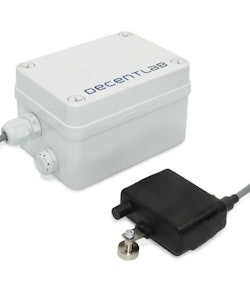It’s important to know what’s hiding under the surface. With reliable soil surveys it’s possible to build roads, bridges, railways and buildings based on a known set of ground rules.

IOT Sensors ensuring a solid base for construction and development projects
10 REAL BENEFITS FROM USING IOT SENSORS IN GEOTECHNICAL ENGINEERING PROJECTS 2023
IoT sensors can provide real-time data on soil moisture, temperature, and other environmental factors that can impact the stability of a construction project.
They can be used to monitor the movement of soil and rock, helping engineers to identify potential risks and take action to prevent landslides or other hazards.
IoT sensors can be used to detect changes in ground vibrations, helping engineers to identify potential subsidence or other structural issues.
They can be used to monitor the structural integrity of retaining walls, bridges, and other structures, alerting engineers to potential problems before they become critical.
IoT sensors can be used to monitor the performance of geotechnical systems, such as piles, anchors, and other foundation elements.
They can be used to monitor the performance of geosynthetic systems, such as geogrids and geomembranes, helping engineers to ensure that these systems are functioning as intended.
IoT sensors can be used to monitor the health of underground utilities, such as pipelines and cables, helping engineers to identify potential leaks or other issues before they become critical.
They can be used to monitor the performance of soil stabilization systems, such as grouting, cement stabilization, and other techniques, to ensure that these systems are functioning as intended.
IoT sensors can be used to monitor the health of vegetation, such as trees and other landscaping elements, helping engineers to identify potential issues before they become critical.
They can be used to monitor the performance of hydraulic systems, such as dams, levees, and other water management systems, helping engineers to identify potential issues before they become critical.
USE IOT SENSORS FOR THESE APPLICATIONS
- Ground movement behind the diaphragm wall
- pore water pressure
- Strain and stresses in structural members
- Temperature
- Vertical deformation
- Vertical displacement
- Water level variations
- Building response to tunneling
- Movement across joints
- Movement across surface cracks
- Bridge stay cables
- Force in ground anchors
- Rainfall monitoring
- Slope instability
- Soil cracks
- Tension monitoring
- Settlement and heave
